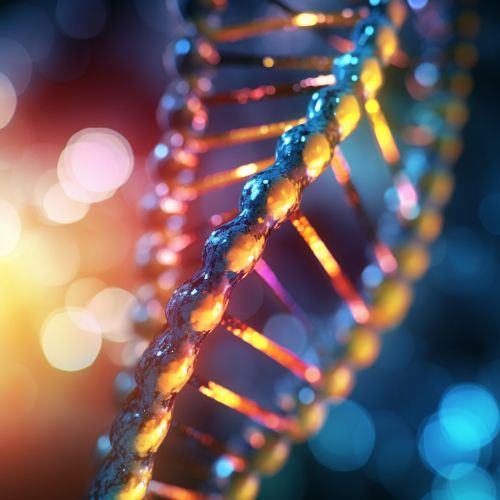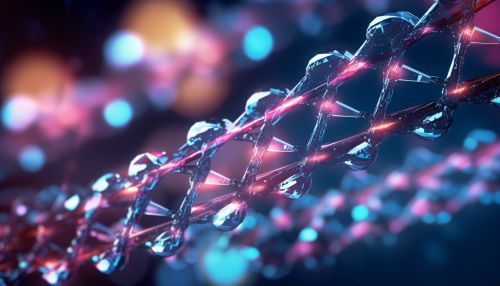Codon
Introduction
A Codon is a sequence of three DNA or RNA nucleotides that corresponds with a specific amino acid or stop signal during protein synthesis. DNA and RNA molecules are written in a language of four nucleotides; meanwhile, the language of proteins includes 20 amino acids. Codons provide the key that allows these two languages to be translated into each other.


Structure and Composition
Each codon is made up of three nucleotides, the building blocks of nucleic acids. In DNA, these nucleotides are adenine (A), cytosine (C), guanine (G), and thymine (T). In RNA, uracil (U) is used instead of thymine. This results in 64 possible combinations of nucleotides, forming 64 possible codons (4^3=64). Each codon corresponds to a specific amino acid or a stop signal, which ends protein synthesis.
Genetic Code and Codon Usage
The genetic code is the set of rules by which information encoded in genetic material (DNA or RNA sequences) is translated into proteins (amino acid sequences) by living cells. The genetic code is highly similar among all organisms and can be expressed in a simple table with 64 entries.
The genetic code is degenerate, meaning that multiple codons can code for the same amino acid. For example, the amino acid leucine can be encoded by six different codons: UUA, UUG, CUU, CUC, CUA, and CUG. This redundancy in the genetic code is thought to be a protective measure against mutations, as changes in the third position of the codon often do not change the encoded amino acid.
However, not all codons are used equally. This phenomenon, known as codon usage bias, is well documented in a wide range of organisms and is thought to result from a balance between mutational bias, natural selection, and genetic drift.
Codon Optimization
Codon optimization is the process of altering the codons in a gene to increase its expression. This is often done in genetic engineering to increase the production of a protein. The process involves changing the DNA sequence of a gene so that it uses codons that are more commonly used in the host organism. This can increase the speed and efficiency of protein synthesis, leading to higher levels of protein production.
Stop Codons and Start Codons
In addition to the 61 codons that represent amino acids, there are three codons known as stop codons, which do not code for an amino acid and instead signal the end of protein synthesis. These are UAA, UAG, and UGA in RNA, or TAA, TAG, and TGA in DNA.
The start codon, AUG in RNA or ATG in DNA, not only signals the start of translation, but also codes for the amino acid methionine (Met) in eukaryotes, or formylmethionine (fMet) in prokaryotes. This means that every protein (in these organisms) starts with methionine or formylmethionine.
Codon Bias and Evolution
Codon bias is the phenomenon where certain codons are used more frequently than others in the coding sequences of an organism's genes. This bias is thought to be a result of natural selection and can have significant effects on the level of protein expression.
Codon bias is also thought to play a role in evolution. For example, organisms with high mutation rates, such as RNA viruses, can rapidly evolve to use different codons, which can affect their fitness and adaptation to different environments.
